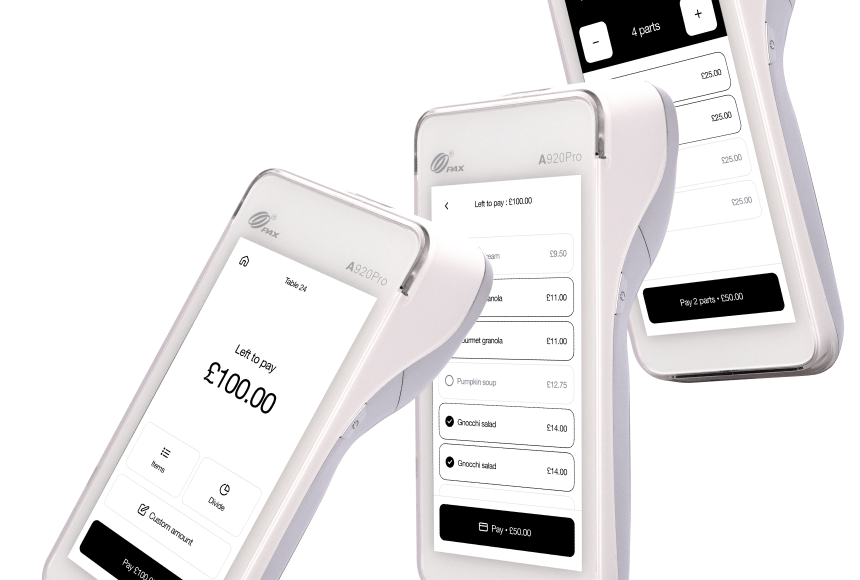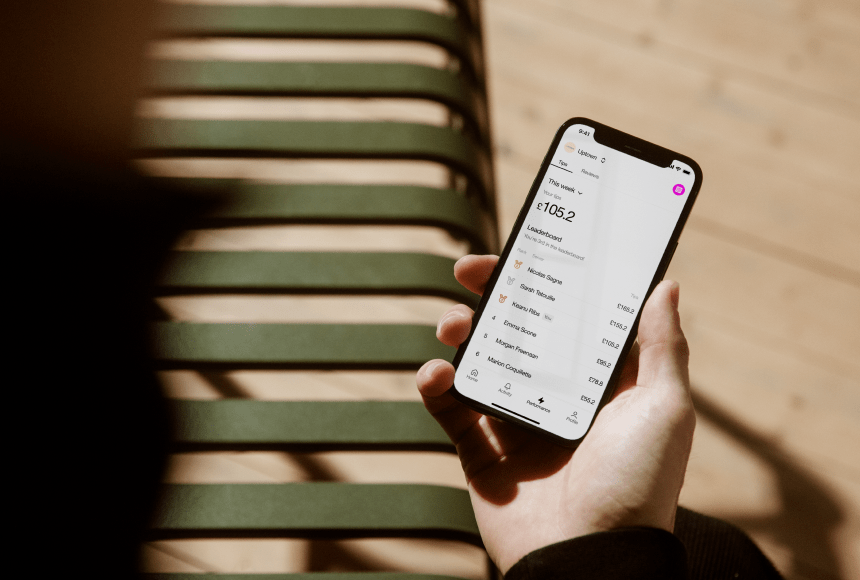
Streamlining Your Restaurant’s Checkout: Pitfalls and Practical Tips
Why Even the Best Payment Terminal Can Go Wrong
You’ve probably spent countless hours perfecting your menu, refining your interior design, and training your front-of-house team. Yet there’s one vital piece of technology that often goes overlooked: your payment terminal. In today’s fast-paced restaurant landscape, diners expect instant, seamless transactions. However, even if you’ve upgraded to a modern, feature-rich payment terminal, there are still some classic pitfalls that can slow down service and frustrate staff and customers alike.
The good news? Most of these pitfalls are easily avoidable. It just takes the right awareness and a dash of organisation. From connectivity blunders to security oversights, let’s look at the most frequent mistakes restaurant owners make with a modern payment terminal—and, more importantly, how to dodge them.
1. Neglecting Proper Staff Training
A shiny new payment terminal is only as good as the people operating it. If your team isn’t comfortable with the interface or doesn’t understand its capabilities, you risk bungled transactions and slow service. This lack of training can leave servers flustered during busy shifts, creating a disjointed experience for guests who simply want to settle the bill and be on their way.
How to avoid it:
- Hands-On Demonstrations: Offer staff the chance to practise real-life scenarios, like splitting bills or adding a tip. The more hands-on time they get, the more comfortable they’ll become.
- Regular Refreshers: New team members join, software updates roll out, and restaurant demands evolve. Schedule periodic check-ins to ensure everyone remains confident with the device.
- Encourage Curiosity: Remind servers that no question is too small. If someone’s unsure how to process a partial payment, for instance, a quick demonstration can avert a major headache during rush hour.
2. Failing to Maintain a Reliable Internet Connection
Modern payment terminals often rely on Wi-Fi or mobile data to process transactions. When connectivity issues pop up, the device may freeze mid-transaction or reject payments outright. This is frustrating for both staff and diners, potentially causing awkward delays at the table.
How to avoid it:
- Network Redundancy: Consider a backup mobile data connection if your primary Wi-Fi network goes down. Some terminals automatically switch to 4G if the main link fails.
- Regular Network Checks: Test your Wi-Fi speed and stability at different times of day. Busy neighbourhoods or thick walls in older buildings can create coverage blind spots.
- Strategic Router Placement: Make sure your routers or access points are positioned to cover the entire dining area. If your restaurant is large or spread out, invest in multiple access points.
3. Ignoring Integration with Your POS System
Your payment terminal might be quick at processing card payments, but if it doesn’t sync with your point-of-sale system, you’re missing out on real-time data and smoother end-of-day reconciliation. Manually re-entering totals or verifying bills at closing time can eat up hours every week, and it’s prone to human error.
How to avoid it:
- Check Compatibility: Before you invest in a new terminal, confirm that it supports direct integration with your existing POS. Ask your provider for case studies of restaurants using the same setup.
- Test Splitting and Gratuities: Does your POS handle split bills elegantly? Can the tip be processed in a single transaction? Make sure these scenarios work seamlessly between the two systems.
- Automate Reports: Connected technology allows daily sales and tips to feed directly into your accounting software. Use this feature to eliminate manual data entry and reduce errors.
4. Underestimating Contactless and Mobile Wallet Use
Whether it’s Apple Pay, Google Pay, or just tap-and-go cards, contactless payments are the norm in the UK. According to UK Finance, contactless accounts for a significant portion of card transactions, and that share continues to grow. If your restaurant’s payment terminal doesn’t fully embrace these methods—or your staff hesitates to offer them—you might be creating unnecessary friction for guests.
How to avoid it:
- Test All Payment Methods: Make sure contactless, chip-and-PIN, and mobile wallets all work smoothly. This fosters customer confidence.
- Offer a Quick Explanation: Not everyone is equally tech-savvy. Train staff to guide diners through mobile wallet payments if they look uncertain.
- Promote Contactless: A small sign or mention on the menu can encourage guests to pay with their phone, saving time and cutting queues during peak hours.
5. Forgetting to Keep Software Updated
Modern payment terminals often come with software or firmware that needs periodic updates. These updates can patch security flaws, add new features, and enhance overall performance. Failing to keep up can lead to glitchy transactions or, worse, expose your restaurant to potential security risks.
How to avoid it:
- Enable Automatic Updates: Some devices let you schedule updates during off-peak hours. This ensures you’re always running the latest version without disrupting service.
- Review Release Notes: When an update is announced, take a moment to see what’s changing. It might include new tip options, loyalty integrations, or security improvements.
- Have a Plan B: If you must update during operating hours, prepare a backup payment method. That way, if something goes wrong, you won’t be left scrambling.
6. Overlooking Security Features
Running a restaurant involves juggling sensitive payment data for hundreds—or even thousands—of transactions every month. When you switch to a modern payment terminal, you take on the responsibility of safeguarding that data. Skipping vital security steps could compromise customer information and put your reputation on the line.
How to avoid it:
- Stay PCI Compliant: Payment Card Industry (PCI) guidelines exist to protect cardholder data. Your terminal and procedures should adhere to these standards without exception.
- Use Strong Passwords: If the device’s admin functions are password-protected, don’t rely on “1234.” Set a complex, unique passcode and update it occasionally.
- Keep Hardware Secure: Don’t let terminals lie around unattended in public areas. Train staff to keep an eye on them, especially if your restaurant has outdoor seating.
7. Missing Opportunities for Tips and Upselling
Most modern payment terminals allow servers to prompt for tips or highlight add-on items. Yet some restaurants turn off these features, fearing they might appear pushy. In reality, well-designed tip prompts and suggestion screens can gently remind diners about extras they might otherwise overlook.
How to avoid it:
- Enable Smart Prompts: A quick on-screen suggestion for a dessert or signature cocktail can boost your average spend. Let technology do the subtle upselling.
- Customise Tip Options: Offer suggested tip percentages, like 10%, 12.5%, or 15%. This approach helps diners decide quickly while feeling in control.
- Train Tactful Presentation: Teach servers to introduce the tip screen casually. “Feel free to leave a tip if you enjoyed everything today—no pressure at all!” This friendly tone balances courtesy with encouragement.
8. Disregarding the Value of Digital Receipts
Printed receipts are easy to lose or misplace. Digital receipts sent via SMS or email can be more convenient for customers and more eco-friendly for you. Still, many restaurants don’t actively promote this option, missing a chance to engage with diners post-visit or reduce paper waste.
How to avoid it:
- Ask First: Offer a digital receipt as the default option. Most guests appreciate the clutter-free approach.
- Attach a Quick Survey: Include a link for feedback in the receipt. This could direct diners to a short questionnaire or a Google review page.
- Brand the Experience: If possible, add your restaurant’s logo or a small thank-you note in the digital receipt. This extends your brand presence right to their inbox.
9. Not Leveraging Additional Tools and Integrations
Today’s payment terminals can do more than just process transactions. Some also sync with inventory management, loyalty programmes, or marketing tools. Others tie in with solutions like sunday, where guests can scan a QR code, pay securely, and even leave a review in one seamless step. Yet many restaurant owners stick to bare-bones functionality, missing out on perks that can boost efficiency and customer engagement.
How to avoid it:
- Explore Built-In Features: Spend time in the terminal’s settings or user manual. You might discover advanced functionalities that save time or heighten guest satisfaction.
- Check for Compatible Platforms: See if your device can link with your reservations system or a loyalty app. These integrations can streamline everything from walk-ins to repeat business.
- Consider a QR Payment Flow: Platforms like sunday let diners handle everything on their smartphones. This can speed up table turnover and encourage real-time Google reviews—an easy way to boost your online reputation.
10. Skimping on Customer Support
No matter how advanced your payment terminal is, problems can arise. Maybe your Wi-Fi cuts out. Maybe the software glitches. If your provider doesn’t offer robust, responsive support, these small hiccups can snowball into major disruptions—especially on busy weekends.
How to avoid it:
- Evaluate Service Level Agreements: When signing on with a payment provider, check if they guarantee certain response times or 24/7 availability.
- Test the Water: Even before committing, reach out with a minor question to gauge how quickly they reply. If it takes days, that’s a red flag.
- Have a Backup Plan: Keep a spare device or a traditional card reader on hand in case your main terminal fails at a critical moment. Redundancy prevents chaos.
11. Overlooking the Importance of Device Maintenance
Like any piece of equipment, modern payment terminals need a bit of TLC. Over time, their screens can crack, batteries can degrade, and keypads can become sticky if they’re exposed to spills or steam from the kitchen. If you ignore these small issues, the terminal’s lifespan may shorten, and your service flow may be compromised in the meantime.
How to avoid it:
- Clean Regularly: A quick wipe-down with a soft cloth can remove grease and fingerprint smudges. Avoid harsh chemicals that could damage electronic components.
- Check the Battery: If your terminal is portable, keep an eye on battery health. A failing battery can crash mid-transaction, so consider periodic replacements.
- Inspect for Physical Damage: Loose cables or a cracked casing could lead to more severe problems later. Tackle minor repairs early to avoid bigger headaches.
12. Confusing Guests with Complex Payment Processes
While your modern terminal offers many features, presenting too many options can overwhelm customers. If they have to swipe, then tap, then sign, then confirm on a second screen, they’ll likely get confused or impatient. Simplicity is a virtue in the realm of checkout experiences.
How to avoid it:
- Streamline Steps: Opt for a flow that requires the fewest possible actions. For example, combine tip selection with the main payment screen instead of making it a separate prompt.
- Label Buttons Clearly: Make sure the screen’s prompts use plain language, like “Add Tip” or “Confirm Payment,” not ambiguous icons or abbreviations.
- Encourage Staff Familiarity: If your server knows how to navigate each step, they can politely guide guests. Confidence from the server reassures the diner.
Securing an Efficient, Guest-Centric Checkout
Running a restaurant is all about creating an experience—from the first sip of wine to the final handshake (or friendly wave) on the way out. An up-to-date payment terminal is a big part of that puzzle, but it’s easy to fall into common traps if you’re not vigilant. From ignoring software updates to bypassing staff training, these oversights can pile up and lead to a frustrating checkout process.
The beauty of modern technology is that, when used correctly, it can reduce friction, save time, and even spark spontaneous guest loyalty. Features like contactless transactions, digital receipts, and integrated QR code payments can help you stand out in a crowded hospitality scene. Just make sure you’re giving that sleek device the attention it deserves—whether that’s timely updates, staff tutorials, or simply wiping it clean after a busy shift.
For further industry insights, you might explore The Caterer, which regularly reports on best practices and emerging tech trends in the UK hospitality sector. Staying informed about the latest innovations and potential pitfalls can help you sidestep problems before they arise.
Ultimately, a modern payment terminal should be a boon, not a burden. By avoiding these common errors, you’ll turn an everyday transaction into a smooth, reassuring experience—one that encourages customers to return, tip generously, and even share glowing reviews. And if you choose to integrate with tools like sunday, you can transform that final step into a swift, contactless checkout that feels like a natural extension of your restaurant’s friendly, streamlined service.
Find out more today
Drop us your details below and we’ll reach out within the next 24
The payment terminal to make your operation simpler.
Connected to your POS, we offer the only payment terminal specifically designed for restaurants.


